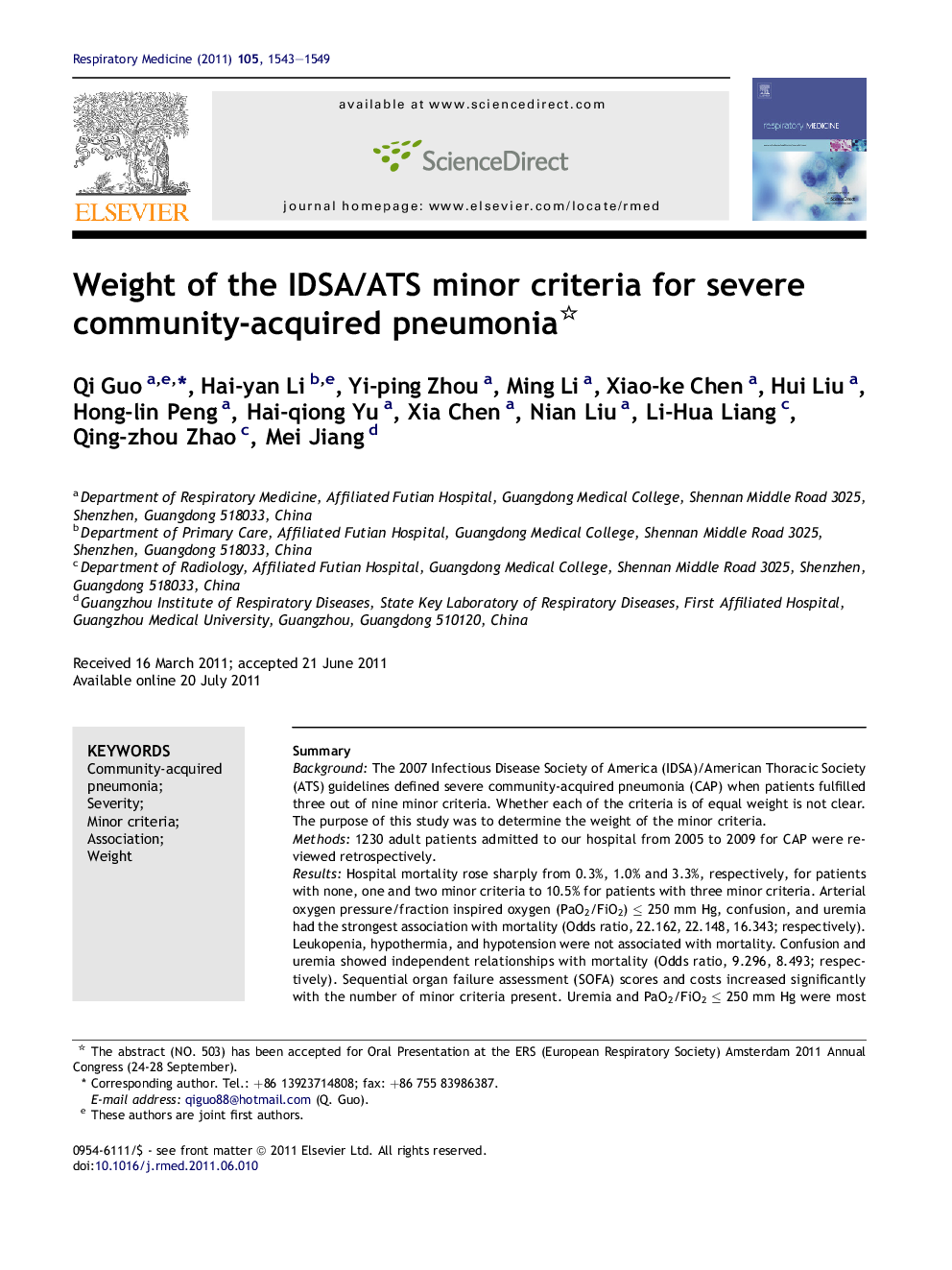| Article ID | Journal | Published Year | Pages | File Type |
|---|---|---|---|---|
| 4210349 | Respiratory Medicine | 2011 | 7 Pages |
SummaryBackgroundThe 2007 Infectious Disease Society of America (IDSA)/American Thoracic Society (ATS) guidelines defined severe community-acquired pneumonia (CAP) when patients fulfilled three out of nine minor criteria. Whether each of the criteria is of equal weight is not clear. The purpose of this study was to determine the weight of the minor criteria.Methods1230 adult patients admitted to our hospital from 2005 to 2009 for CAP were reviewed retrospectively.ResultsHospital mortality rose sharply from 0.3%, 1.0% and 3.3%, respectively, for patients with none, one and two minor criteria to 10.5% for patients with three minor criteria. Arterial oxygen pressure/fraction inspired oxygen (PaO2/FiO2) ≤ 250 mm Hg, confusion, and uremia had the strongest association with mortality (Odds ratio, 22.162, 22.148, 16.343; respectively). Leukopenia, hypothermia, and hypotension were not associated with mortality. Confusion and uremia showed independent relationships with mortality (Odds ratio, 9.296, 8.493; respectively). Sequential organ failure assessment (SOFA) scores and costs increased significantly with the number of minor criteria present. Uremia and PaO2/FiO2 ≤ 250 mm Hg were most strongly associated with SOFA scores [rank correlation coefficient (rs), 0.352, 0.336; respectively]. PaO2/FiO2 ≤ 250 mm Hg and confusion were in closest relation to hospital length of stay (LOS) (rs, 0.114, 0.114; respectively). PaO2/FiO2 ≤ 250 mm Hg and multilobar infiltrates were most strongly associated with costs (rs, 0.257, 0.196; respectively).ConclusionsThe individual 2007 IDSA/ATS minor criteria for severe CAP were of unequal weight in predicting hospital mortality, SOFA scores, hospital LOS, and costs.
